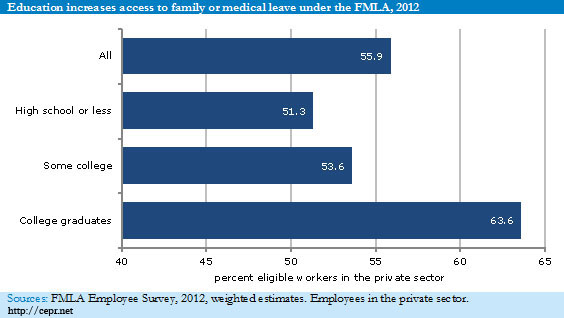 There is a lot to learn from hooking up—including when you talk to people who don’t do it in any kind of stereotypical way. Some of the clichés that seem to get replayed are that “everyone” at college is doing it (70 percent of college seniors have some experience of hookups). And by “doing it” the perception is doing “it” – even though 40 percent of students who hook up reported doing so in their most recent hook up. Another stereotype is that the hookup scene is typically centered around (straight) men’s desires, even if girls-kissing-girls is part of the action sometimes. Two new hooking up studies take on these views of hooking up.
There is a lot to learn from hooking up—including when you talk to people who don’t do it in any kind of stereotypical way. Some of the clichés that seem to get replayed are that “everyone” at college is doing it (70 percent of college seniors have some experience of hookups). And by “doing it” the perception is doing “it” – even though 40 percent of students who hook up reported doing so in their most recent hook up. Another stereotype is that the hookup scene is typically centered around (straight) men’s desires, even if girls-kissing-girls is part of the action sometimes. Two new hooking up studies take on these views of hooking up.
Is it everyone? What about commuters? University of Illinois-Chicago sociologists Rachel Allison and Barbara Risman reported this week on their study (“‘It Goes Hand in Hand with the Parties’: Race, Class, and Residence in College Student Negotiations of Hooking Up,” forthcoming in Sociological Perspectives). They analyzed 87 in-depth interviews with commuter and residential undergraduates at UIC: turns out commuter students do not typically participate in the hook up culture—but they still believe it is a key feature of authentic college experience.
But is hooking up the “real” college experience? According to Allison and Risman: “Students from a range of class and ethnic backgrounds told us the ‘real’ college experience involves parties and hooking up, but white middle-class students believed they actually live the ‘real’ college experience.” One student (a Middle-Eastern woman) in the study explained about hooking up: “It goes hand in hand with the parties.”
Commuters and minority students talked wistfully about missing what they believe is the “real” college experience–often based on what they see in movies or television of campus life. The researchers explained, “They feel they are getting a second rate experience. It’s not that the commuting students don’t tell us they sometimes have casual sex—they do. But they do not participate in the hooking up culture that most students see as part of college life.”
And girls kissing girls? Is it always about the guys? A study in the April 2014 issue of Gender & Society, reports that for some women the super-straight environment of college hookups is also a setting “to explore and later verify bisexual, lesbian, or queer sexual identities.” Turns out public kissing and threesomes play an important role. Not all of that sex play is about performing for men’s pleasure, and surveys show significant sexual fluidity.
In the Gender & Society study, “Queer Women in the Hookup Scene: Beyond the Closet?” Leila Rupp and Verta Taylor (University of California-Santa Barbara), Shiri Regev-Messalem (Bar Ilan University, Israel), Alison Fogarty (Stanford University), and Paula England (New York University) used the Online College and Social Life Survey (OCSLS) of over 24,000 college students from 21 four-year colleges and universities that was designed to study how college students approach hooking up, dating, and relationships. To this large data set, the researchers added 55 in-depth interviews with women students at Stanford University and the University of California, Santa Barbara, who had had some romantic or sexual experience with other women, to learn more about same-sex activity occurring in hookup settings that are mainly understood to be heterosexual.
Study co-author Paula England—who developed the OCSLS study—explained, “‘Hooking up’ was defined in our survey as ‘whatever definition of a hookup you and your friends use,’ but we know from talking to students that what they usually mean by a hookup is some sexual activity—ranging from kissing to intercourse—outside of a committed relationship.”
Hooking up, women with women, and a puzzle. The investigators reported that of the 14,128 women surveyed in the OCSLS, 94 percent identify as heterosexual. Though identifying as “straight,” these women’s behavior did not always line up with that—instead, women had more sexual fluidity. For example, forty percent of women who called themselves lesbians had had oral sex or intercourse with men; two percent of women who identify as straight report having had oral sex with a woman; compared to straight women, more women who indicated they were not sure about their sexual identities had same-sex sexual experience: 15 percent have given and 18 percent have received oral sex from a woman.
To examine sexual fluidity suggested by these women’s reports, the investigators conducted in-depth interviews. They interviewed women who identified as queer, lesbian, gay, bisexual, or some other non-heterosexual identity in order to learn more about how encounters in the hookup scene played a role in developing their current sexual identities. They learned that, since women making out with other women and threesomes between two women and a man are acceptable as a turn-on for men, this allowed women to expand and explore their sexual identities.
As study coauthor Verta Taylor points out, “Some students are embracing fluid identities and calling themselves ‘queer,’ ‘pansexual,’ ‘fluid,’ ‘bi-curious’ or simply refusing any kind of label. The old label bisexual no longer fits because even that term implies that there are only two options: lesbian/gay or straight.”
Women kissing women. In tune with the Katy Perry song, “I Kissed a Girl”, the interviews revealed that for some women, public kissing—typically seen as for the enjoyment of men onlookers—is a key opportunity for exploring same-sex attractions.
Often alcohol played a role in women’s opportunities to explore same-sex attraction, just as it plays a significant role in hookups in general. While some women who make out with other women in public had a previous same-sex attraction, others told interviewers about experimenting when they had had no previous sexual attraction to women. In sum, the authors note that “Kissing can result from or lead to emotional connections with women. It doesn’t always—but sometimes it leads to more exploration.” The interviews confirmed that public same-sex kissing in the hook up scene is one pathway into same-sex desire and behavior.
Threesomes. About 20 percent of women interviewed for this study reported participating in threesomes. “Threesomes allow same-sex pleasure without the stigma of non-heterosexual identity,” the authors explained. In some cases, women said that threesomes were a way to reduce their anxiety about approaching women on their own. One woman noted, “It’s not clear how you would initiate a relationship with a woman…I’m really inexperienced chasing women, rather more experienced at chasing men.” In other cases, women explained that threesomes were instigated by male partners, but that it led to women following up—solo—with the other woman in the encounter. The authors explain, “Although threesomes may begin with men’s desires, they introduce women to new sexual pleasures or allow them to act on same-sex or bisexual desires.”
Coauthor and historian Leila Rupp explains that this may not be so new: She points to intimate sexual relationships between co-wives in polygynous households in China and the Middle East, romantic friends in heterosexual marriages in the Euro-American world of the eighteenth and nineteenth centuries, and “girlfriends” in avant-garde cultural environments such as Greenwich Village and Weimar Berlin in the 1920s. “Bisexual behavior between women has flourished in a variety of societies where women’s same-sex desires and sexual behavior did not pose a threat to the gender order,” explains Rupp. Whether in these historical settings or in the setting of collegiate hookup culture, women’s same-sex sexuality can flourish in tight conjunction with heterosexuality. What is new in the 21st century setting, however, are the ways in which women can go on to have the opportunity to affirm new identities.
Note: This is based in part on releases I wrote for CCF and Gender & Society. See “Not everyone is hooking up at college—Here’s why” (CCF) and “Can I watch? Sometimes women kissing women isn’t about you” (G&S) for more links and suggested references.










 There is a lot to learn from hooking up—including when you talk to people who don’t do it in any kind of stereotypical way. Some of the clichés that seem to get replayed are that “everyone” at college is doing it (70 percent of college seniors have some experience of hookups). And by “doing it” the perception is doing “it” – even though 40 percent of students who hook up reported doing so in their most recent hook up. Another stereotype is that the hookup scene is typically centered around (straight) men’s desires, even if
There is a lot to learn from hooking up—including when you talk to people who don’t do it in any kind of stereotypical way. Some of the clichés that seem to get replayed are that “everyone” at college is doing it (70 percent of college seniors have some experience of hookups). And by “doing it” the perception is doing “it” – even though 40 percent of students who hook up reported doing so in their most recent hook up. Another stereotype is that the hookup scene is typically centered around (straight) men’s desires, even if 
